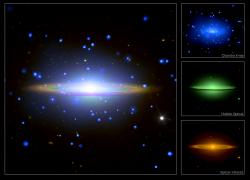 When we look into the skies with our eyes, we see in the visible spectrum. Although objects can look beautiful, it’s only a fraction of the entire electromagnetic spectrum. To really see and understand the Universe, you’ll want to look in different regions of the spectrum. The three great observatories: Hubble, Spitzer and Chandra, have teamed up to spotlight the Sombrero Galaxy (aka M104) in three different wavelengths.
When we look into the skies with our eyes, we see in the visible spectrum. Although objects can look beautiful, it’s only a fraction of the entire electromagnetic spectrum. To really see and understand the Universe, you’ll want to look in different regions of the spectrum. The three great observatories: Hubble, Spitzer and Chandra, have teamed up to spotlight the Sombrero Galaxy (aka M104) in three different wavelengths.
Continue reading “Triple View of the Sombrero Galaxy”
Saturn’s Glowing Rings
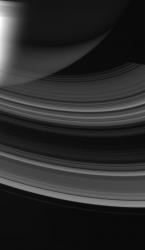 This beautiful photograph taken by Cassini shows the rings of Saturn, lit by the Sun from below. The sunlight bounces off the rings’ opposite side and illuminates Saturn’s night side. It’s amazing to think that a photograph like this could only be taken from Cassini’s current perspective, 33 degrees above the ringplane; here on Earth, we’re stuck with the tilt of the rings that Saturn presents to us.
This beautiful photograph taken by Cassini shows the rings of Saturn, lit by the Sun from below. The sunlight bounces off the rings’ opposite side and illuminates Saturn’s night side. It’s amazing to think that a photograph like this could only be taken from Cassini’s current perspective, 33 degrees above the ringplane; here on Earth, we’re stuck with the tilt of the rings that Saturn presents to us.
Continue reading “Saturn’s Glowing Rings”
The Next Solar Cycle is Nearly Upon Us
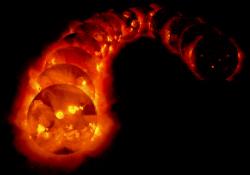 As you may know, our Sun follows a relatively predictable 11-year cycle of solar activity. During the solar minimum, there’s very little activity, and only a handful of sunspots. During the solar maximum, there can be frequent and powerful coronal mass ejections and X-ray flares.
As you may know, our Sun follows a relatively predictable 11-year cycle of solar activity. During the solar minimum, there’s very little activity, and only a handful of sunspots. During the solar maximum, there can be frequent and powerful coronal mass ejections and X-ray flares.
Continue reading “The Next Solar Cycle is Nearly Upon Us”
Cooler Stars Need to Keep Out of the Danger Zone
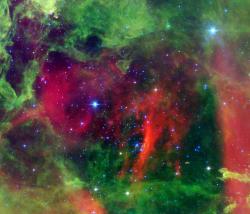 If you’re a newly forming star system, there’s no better place to be than a stellar nursery. All those raw elements make the perfect building blocks of stars and planets. The problem is that super hot giant stars can release great torrents of radiation, blasting away newly forming planets.
If you’re a newly forming star system, there’s no better place to be than a stellar nursery. All those raw elements make the perfect building blocks of stars and planets. The problem is that super hot giant stars can release great torrents of radiation, blasting away newly forming planets.
Continue reading “Cooler Stars Need to Keep Out of the Danger Zone”
Podcast: Choosing and Using a Telescope
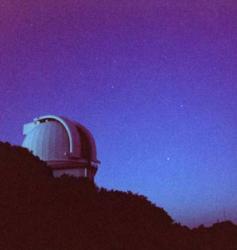 Buying your first telescope can be a nerve-wracking experience filled with buyer’s remorse. This week we discuss the basics of purchasing your first binoculars and telescope. What to look for, how to clean older equipment, and how to use it for the first time. Let’s make sure your first investment in this wonderful hobby is money well-spent.
Buying your first telescope can be a nerve-wracking experience filled with buyer’s remorse. This week we discuss the basics of purchasing your first binoculars and telescope. What to look for, how to clean older equipment, and how to use it for the first time. Let’s make sure your first investment in this wonderful hobby is money well-spent.
Continue reading “Podcast: Choosing and Using a Telescope”
Matter Should Dominate the Universe Forever
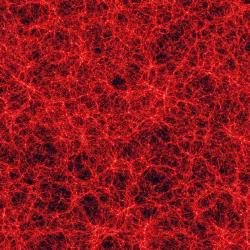 Thanks to Einstein, we know that matter and energy are just different versions of one another. E=mc2 tells you how much energy you’d get if you converted mass into energy. Don’t try, it’s hard. Physicists were concerned that all matter in the Universe would eventually decay into radiation after trillions and trillions of years of time.
Thanks to Einstein, we know that matter and energy are just different versions of one another. E=mc2 tells you how much energy you’d get if you converted mass into energy. Don’t try, it’s hard. Physicists were concerned that all matter in the Universe would eventually decay into radiation after trillions and trillions of years of time.
Continue reading “Matter Should Dominate the Universe Forever”
Earth-Sized Planet Discovered in the Habitable Zone
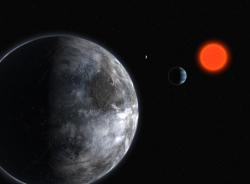 Great big Jupiter-like planets are one thing, but the Holy Grail of extrasolar planetary discover is going to be another Earth – complete with life. We’re not there yet, but astronomers announced the next best thing yesterday: a roughly Earth-mass planet orbiting within the habitable zone of its parent star. In other words, liquid water could exist on this rocky planet.
Great big Jupiter-like planets are one thing, but the Holy Grail of extrasolar planetary discover is going to be another Earth – complete with life. We’re not there yet, but astronomers announced the next best thing yesterday: a roughly Earth-mass planet orbiting within the habitable zone of its parent star. In other words, liquid water could exist on this rocky planet.
Continue reading “Earth-Sized Planet Discovered in the Habitable Zone”
What’s Up this Week: April 23 – April 29, 2007
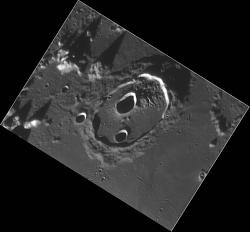 Monday, April 23 – Pioneer quantum physicist Max Planck was born on this day in 1858. In 1900, Max developed the Planck equation to explain the shape of blackbody spectra (a function of temperature and wavelength of emission). A “blackbody” is any object that absorbs all incident radiation – regardless of wavelength. For example, heated metal has blackbody properties because the energy it radiates is thermal. The blackbody spectrum’s shape remains constant, and the peak and height of an emitter can be measured against it – be it cosmic background radiation or our own bodies.
Monday, April 23 – Pioneer quantum physicist Max Planck was born on this day in 1858. In 1900, Max developed the Planck equation to explain the shape of blackbody spectra (a function of temperature and wavelength of emission). A “blackbody” is any object that absorbs all incident radiation – regardless of wavelength. For example, heated metal has blackbody properties because the energy it radiates is thermal. The blackbody spectrum’s shape remains constant, and the peak and height of an emitter can be measured against it – be it cosmic background radiation or our own bodies.
Continue reading “What’s Up this Week: April 23 – April 29, 2007”
See the Sun, In Thrilling 3-D!
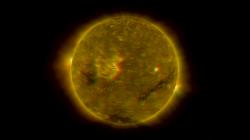 NASA’s newest solar observatories have released their first images of the Sun, and they’re great. Of course, to really enjoy the pictures, you’ll need 3-D glasses.
NASA’s newest solar observatories have released their first images of the Sun, and they’re great. Of course, to really enjoy the pictures, you’ll need 3-D glasses.
Continue reading “See the Sun, In Thrilling 3-D!”
Expedition 14 Returns to Earth
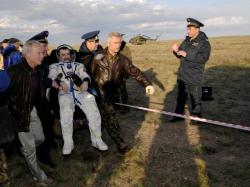 The two crewmembers of Expedition 14 returned to Earth on Saturday, with astro-tourist Charles Simonyi along for the ride. Commander Mike Lopez-Alegria and Flight Engineer Mikhail Tyurin had been aboard the International Space Station since September 20th, while Simonyi arrived on April 7th. Their Soyuz TMA-9 capsule touched down in the Central Asian steppes of Kazakhstan at 1231 GMT (8:31 am EDT).
The two crewmembers of Expedition 14 returned to Earth on Saturday, with astro-tourist Charles Simonyi along for the ride. Commander Mike Lopez-Alegria and Flight Engineer Mikhail Tyurin had been aboard the International Space Station since September 20th, while Simonyi arrived on April 7th. Their Soyuz TMA-9 capsule touched down in the Central Asian steppes of Kazakhstan at 1231 GMT (8:31 am EDT).
Continue reading “Expedition 14 Returns to Earth”
